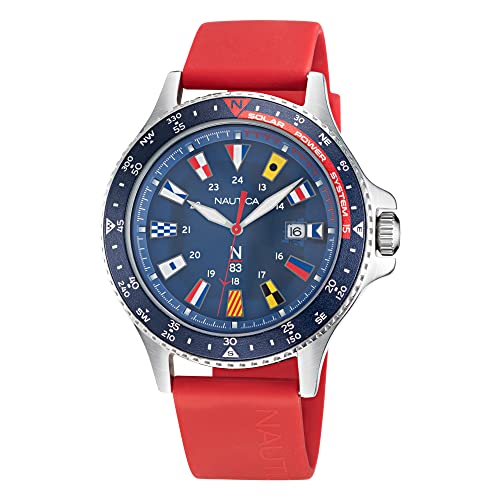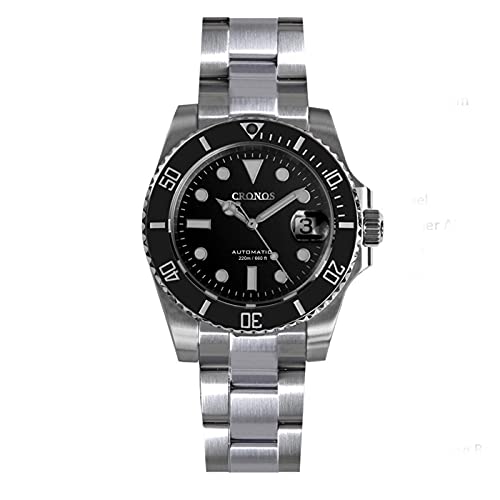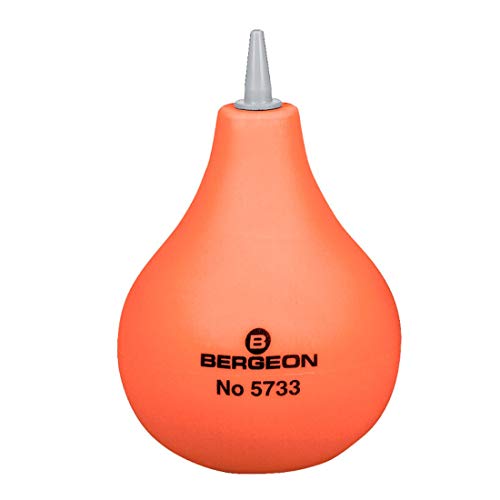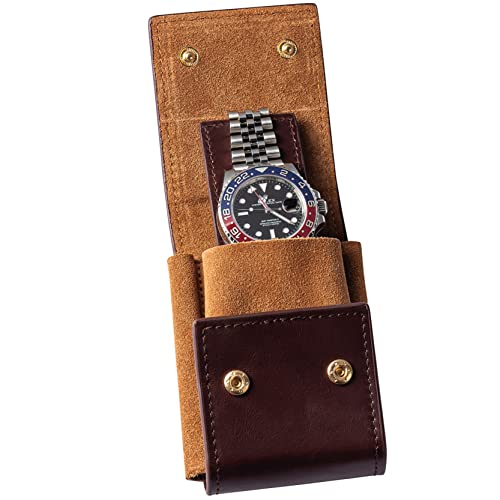This step-by-step guide will show you how to properly clean and maintain your nautical watch so that it lasts longer and functions at its best.
Sailing in Style
Step 1: Prepare the necessary materials
Gather the necessary materials for cleaning your watch. You will need a soft microfiber cloth, which is gentle enough to prevent scratching the surface of your watch. Ensure that you have mild soap or a specific watch cleaning solution that is suitable for your watch type. This will help to remove any dirt or residue without causing damage. In addition, gather a small brush with soft bristles to carefully clean hard-to-reach areas, such as the intricate details of the watch band. A toothpick or a small pin can be handy for removing any stubborn dirt or debris in crevices. Lastly, if your watch has a specialized case, you may need a watch case opener tool to safely remove the back of the watch.
Step 2: Remove the watch band
To remove the watch band from your nautical watch, follow these simple steps:
- Locate the spring bar: Look for the small metal bar connecting the watch band to the case. This spring bar is responsible for holding the band in place. It is usually located on the edge of the watch case, near where the band attaches.Example: On a stainless steel watch, you might find the spring bar on the underside of the lugs, which are the protruding parts that hold the watch band.
- Use a spring bar tool: If you don’t have a spring bar tool, you can also use a small flathead screwdriver or a pair of tweezers. Insert the tool into the small gap on the side of the spring bar and apply gentle pressure to compress it.Example: Insert the screwdriver between the spring bar and the lug, then twist slightly to push down on the spring bar.
- Release one end of the spring bar: While applying pressure to the spring bar, carefully tilt the band away from the case to release one end. Keep holding the spring bar down to prevent it from snapping back into place.Example: With the screwdriver still inserted, gently pull the band away from the case to release one end of the spring bar.
- Repeat for the other end: Once one end of the spring bar is released, continue applying pressure and tilt the band in the opposite direction to release the other end of the spring bar.Example: With one end of the spring bar released, tilt the band in the opposite direction while still holding down the spring bar to release the other end.
- Remove the band: With both ends of the spring bar released, carefully slide the watch band away from the case. Take your time to ensure you don’t damage the band or the case.Example: Slide the band away from the case by pulling it gently and straight outwards.
By removing the watch band, you can now clean both the band and the case more effectively, ensuring your nautical watch stays in top condition for long-lasting performance.
Step 3: Clean the watch band
Wet the soft microfiber cloth with mild soap or watch cleaning solution. Gently wipe the watch band, making sure to cover every part of it. Apply a bit more pressure on areas where dirt or grime is more visible. However, be cautious when cleaning any metal or leather parts to avoid scratching or damaging them. Make sure to clean all sides of the band thoroughly to remove any dirt or residue.
Step 4: Clean the watch case
- Use the small brush with soft bristles to carefully brush the watch case, removing any dust or debris.
- Gently scrape off stubborn stains or marks using a toothpick or a small pin.
- Take caution not to scratch the case or damage any delicate components.
Step 5: Rinse and dry
After thoroughly cleaning your watch band and case, it is important to rinse them under running water to remove any lingering soap residue. This will help ensure that your watch is left sparkling clean and free from any potential irritants. To do this, hold your watch band and case under a gentle stream of water. Make sure to rotate them, allowing the water to reach all areas, including the crevices and links. You can use your fingers to aid in the rinsing process, ensuring that all soap is removed. For example, if you notice any suds or lather, continue rinsing until the water runs clear.
Once you have finished rinsing, it is crucial to dry the watch band and case thoroughly. Failure to remove all moisture can lead to water damage and potential corrosion. To dry them, use a clean microfiber cloth and gently pat the surfaces until they are completely dry. Pay special attention to the areas where water may accumulate, such as the buckle or the back of the case. It is important to be thorough in this step, as even a small amount of moisture left behind can cause problems. For instance, if you notice any dampness, continue patting until all moisture is gone. By following these steps, you will be able to maintain your watch’s hygiene and ensure its longevity.
Step 6: Reassemble and store
- After ensuring that the watch band and case are thoroughly dry, reattach the band to the case if it was removed during the cleaning process.
- Make sure the band is securely fastened to the case to prevent any accidental detachment.
- Find a suitable storage location for your nautical watch. Opt for a cool and dry place that is away from direct sunlight or extreme temperatures.
- Avoid storing the watch near windows or radiators as exposure to heat or prolonged sunlight can cause damage.
- Choose a safe spot where the watch will not be at risk of being dropped or knocked over.
- It is recommended to place the watch in a box or soft pouch to protect it from dust and scratches while in storage.
- Regularly check on your watch to ensure that it is still functioning and in good condition, even when not in use.
Final tips and reminders
In conclusion, taking the time to properly clean and maintain your nautical watch will ensure its longevity and keep it looking great. By following the steps outlined in this blog post, you’ll be able to enjoy your watch for many years to come. Remember to regularly clean the exterior, check the water resistance, and service the watch when necessary. By implementing these practices, you’ll be able to preserve the functionality and aesthetic appeal of your nautical watch. So go ahead and give your watch the care it deserves and enjoy its timeless beauty on all your nautical adventures.
Tools and Materials
Nautical Watch Care Guide
Tips for Cleaning and Maintaining Marine Electronics
Navigating the How to Use Section for Nautical Watches
- Familiarize yourself with the basic features: Start by understanding the different components on a nautical watch, such as the rotating bezel, luminescent hands, and markers. Learn how to read the time, date, and any additional functions specific to your watch model
- Learn nautical terminology: As a beginner, it’s helpful to understand common nautical terms like tide, depth, knots, and distance. This knowledge will allow you to make better use of the features on your nautical watch, especially if it includes tide charts, depth gauges, or speed calculations
- Use the rotating bezel for timing: Most nautical watches have a rotating bezel that can be used for various timing purposes. To measure elapsed time, align the triangle marker with the current minute hand position and start the timing. This feature is particularly useful for activities like sailing, diving, or navigating
- Utilize the illumination feature: Many nautical watches have luminescent hands and markers to ensure readability in low light conditions. Familiarize yourself with how the illumination works on your watch, including how long it lasts and how to activate it. This feature is particularly important for night sailing or diving
- Consult the user manual: Finally, always refer to the user manual provided with your nautical watch. It will provide specific instructions about the features, settings, and maintenance of your watch. It’s crucial to understand the guidelines to protect your investment and ensure optimal performance
- Remember, practice and experience play a vital role in improving your proficiency with nautical watches. As you become more comfortable with the basic functions, you can explore advanced features and make the most out of your timepiece on your nautical adventures
Common Questions about Nautical Watches
Do nautical watches have any specific indicators or complications related to tides or sea conditions?
Yes, nautical watches often have specific indicators or complications related to tides or sea conditions. One common indicator is a tide subdial or a separate hand that indicates the current tide level. This allows sailors, fishermen, and other maritime professionals to plan their activities according to the tide’s ebb and flow. Additionally, some nautical watches may feature a moon phase complication, which helps predict tidal behavior based on the moon’s position in its lunar cycle. Other sea-related complications that can be found in nautical watches include barometers, compasses, and water resistance features, which enhance their functionality and suitability for maritime use.
Are there any historical or iconic nautical watches that enthusiasts and collectors highly value?
Yes, there are several historical and iconic nautical watches that enthusiasts and collectors highly value. One such watch is the Rolex Submariner, which was introduced in 1953 and became known as the first wristwatch to be water-resistant up to a depth of 100 meters. The Submariner’s design and functionality were specifically tailored for divers and it quickly gained popularity among both professional divers and watch collectors.
Another highly valued nautical watch is the Omega Seamaster, which was first introduced in 1948 as a tribute to Omega’s wartime contributions. The Seamaster has a rich history of association with water sports and has been the official watch of the British Royal Navy, as well as James Bond’s preferred timepiece in numerous films.
Other notable nautical watches include the Blancpain Fifty Fathoms, which was developed in 1953 as one of the first modern diving watches, and the Panerai Luminor, which originated as a military watch for the Italian Navy’s frogmen commandos.
These watches, along with a few others like the Breitling Superocean and the Audemars Piguet Royal Oak Offshore, have become iconic timepieces among nautical watch enthusiasts and collectors due to their technical innovations, historical significance, and distinctive designs.























